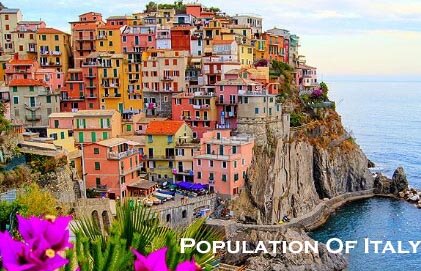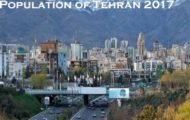Italy is a scenic country in Europe. It has a to a great extent seasonal climate because of its shape. Amid the Middle Ages, Italy endured sociopolitical fall in the midst of cataclysmic barbarian intrusions, however by the eleventh century, various adversary city-states and sea republics rose to extraordinary prosperity via shipping, business, and banking.

It has the third biggest economy in the Eurozone and eighth biggest economy on the planet. Italy has a high level of human development and has the highest life expectancy in the EU. Italy assumes a conspicuous part in local and global monetary, social and strategic issues, and the nation is both a provincial power and an extraordinary power.
POPULATION OF ITALY IN 2017:
Talking about population, in order to check out the population of Italy in 2017, we need to have a look at the population of the past 5 years. They are as per the following:
- 2012 – 59.54 Million
- 2013 – 59.83 Million
- 2014 – 60 Million
- 2015 – 60.2 Million
- 2016 – 60.8 Million
Getting from the past data of Italy from the year 2012-16, it has been noticed that there has been an increase of 1.26 Million in the past 5 years. Therefore, it has been seen that every year the population increases by 0.252 Million. Hence, the population of Italy in 2017 is estimated to be 60.8 Million + 0.252 Million = 61.052 Million. So, the population of Italy in the year 2017 as per estimated data = 61.052 Million.
ITALY Population 2017 – 61.052 Million(Estimated)
DEMOGRAPHY OF ITALY:
The figures for its populace avoid unlawful workers, as their numbers are difficult to decide. Gauges put their numbers at 670,000 currently, a considerable lot are from Eastern Europe and also North Africa. The number of illegal migrants entering the organization has expanded by 43% in 2016, as indicated by reports. There are additionally 1 million Romanian subjects formally enlisted in Italy, followed by Albanian and Moroccans with a population of a large portion of half million each. The biggest ethnic group in the country is Italian, consisting of about 96% of its population.
POPULATION DENSITY AND GROWTH OF ITALY:
The population density is 201.3 persons per square kilometer. Its population is expected to go down all through the 21st century with a death rate now incredibly surpassing the birth rate. Most recent pointers indicate 1,673 deaths every day, contrasted with only 1,353 births per day. Although there is a positive net migration of 289 in a day, the general pattern is presently negative. Right now, its foreign inhabitants are outpacing the nation’s population growth.
Italy is a quickly aging and in 2014 an entire 22% of the populace was 65 or more, with only 13.5% less than 15 years old. The population is relied upon to decrease throughout the following 3 decades as the nation as of now has a death rate that surpasses its birth rate. The UN evaluates that 2016 will be the country’s top population, and the nation’s populace will decrease for the rest of the century.
FACTS ABOUT ITALY:
- Excavations all through the country uncovered a Neanderthal nearness going back to somewhere in the range of 200,000 years prior, while current Humans landed around 40,000 years prior.
- After the Western Roman Empire fell, the country was seized by the Ostrogoths, followed in the sixth century by Byzantine Emperor Justinian. The attack of another Germanic tribe, the Lombards, late around the same time, diminished the Byzantine and began the end of political solidarity of the promontory for the following 1,300 years.
- The introduction of the Kingdom of Italy was the aftereffect of endeavors by Italian patriots and monarchists faithful to the House of Savoy to build up an assembled kingdom including the whole Italian Peninsula.
- On account of the colossal longitudinal extension of the peninsula and the for the most part mountainous interior conformation, the weather of Italy is profoundly different. In the vast majority of the inland northern areas, the weather varies from moist subtropical to muggy mainland and maritime climatic conditions.
- The country has been a unitary parliamentary republic from the year 1946, when the monarchy was annulled by a constitutional choice.


